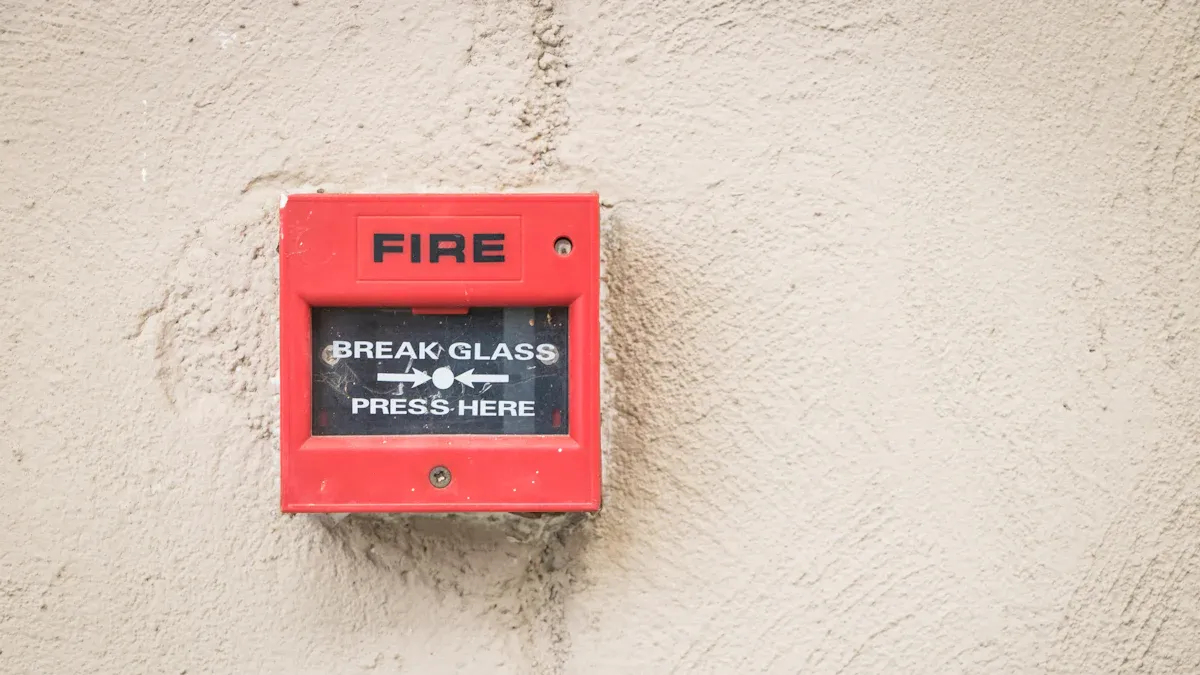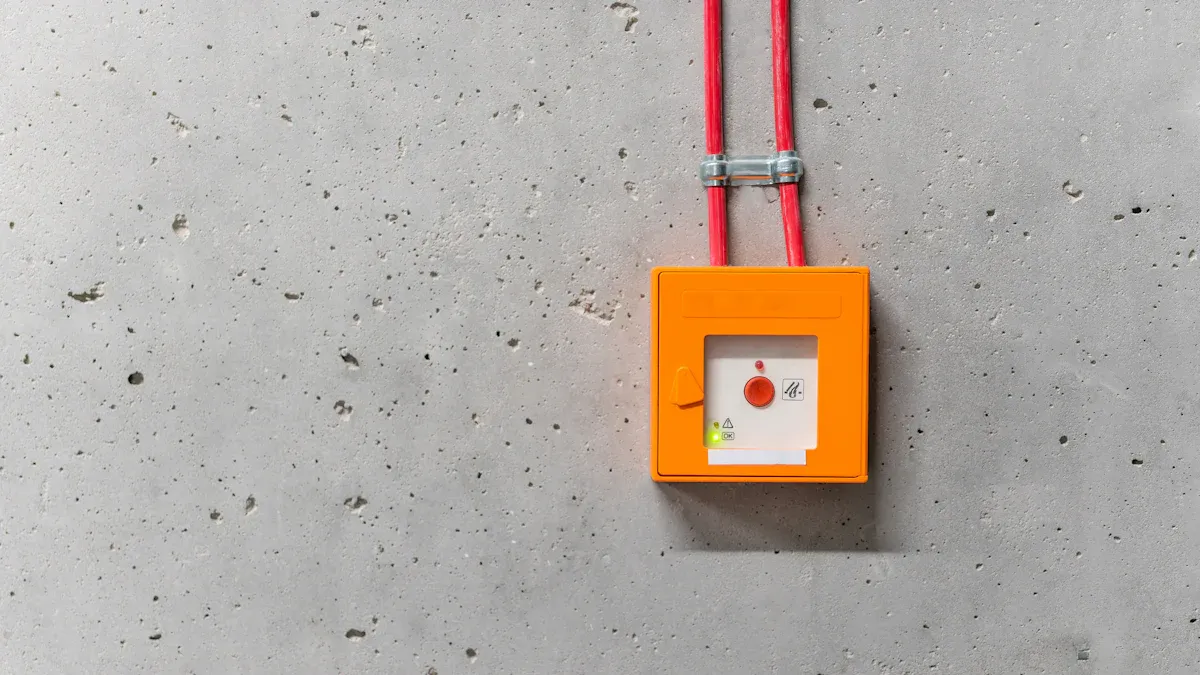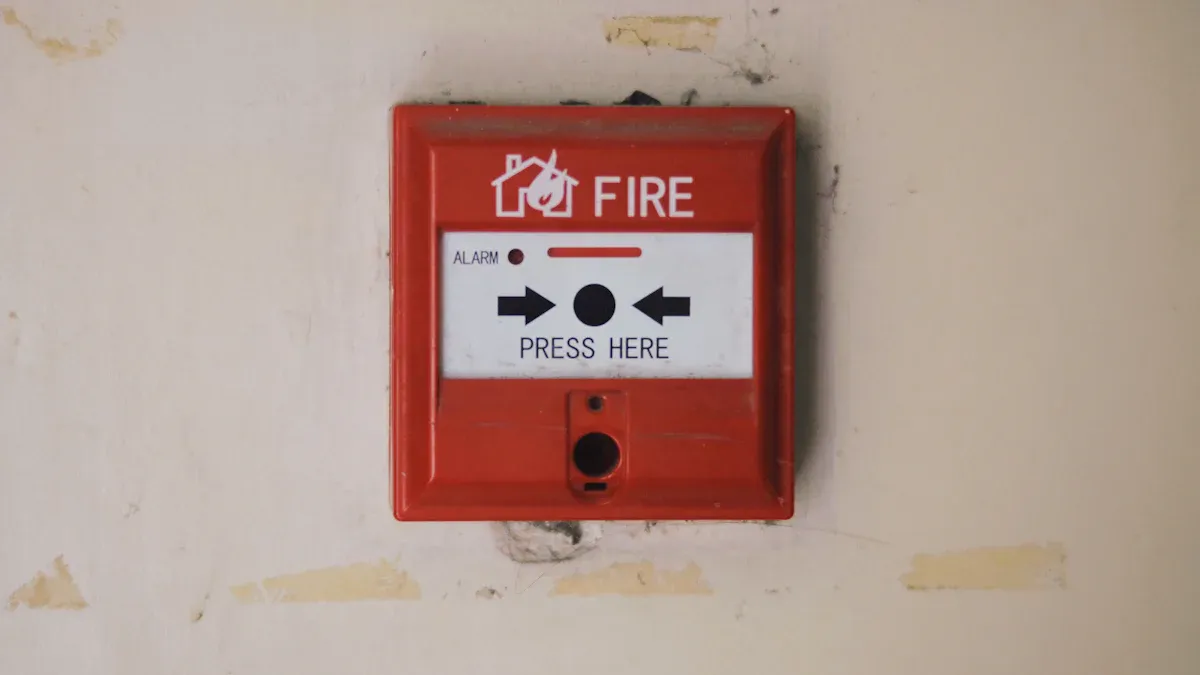
During plant emergencies, every second counts. A fire telephone jack serves as a critical communication tool, connecting personnel to emergency responders. Its accessibility ensures swift action, reducing the risk of harm. Obstructions or neglect can compromise its functionality, delaying vital responses. Prioritizing its availability safeguards lives and enhances overall safety protocols.
Key Takeaways
- Keep fire telephone jacks easy to reach. Clear the area around them to avoid blockages. This helps emergency teams respond faster.
- Check fire telephone jacks often to make sure they work. Fix any problems right away. Regular checks prevent failures during emergencies.
- Teach workers where fire telephone jacks are and how to use them. Practice drills and training help them act fast in emergencies.
Why Accessibility of Fire Telephone Jacks Matters

Role in Emergency Communication
Fire telephone jacks play a pivotal role in emergency communication systems. They provide a direct and reliable line of contact between on-site personnel and emergency responders. Unlike mobile phones, which may fail due to network congestion or signal loss, fire telephone jacks operate on dedicated circuits designed for emergencies. This ensures uninterrupted communication during critical moments.
In large industrial plants, where emergencies can escalate rapidly, these jacks allow teams to coordinate evacuation efforts, report hazards, and request immediate assistance. Their accessibility ensures that communication remains seamless, even in high-stress situations.
Tip: Positioning fire telephone jacks in easily reachable locations can significantly enhance response times during emergencies.
Risks of Inaccessibility
Inaccessible fire telephone jacks can lead to severe consequences during emergencies. Delayed communication may hinder rescue operations, escalate property damage, and increase the risk of injuries or fatalities.
Several factors contribute to inaccessibility, including physical obstructions, poor maintenance, and inadequate signage. For example, a fire telephone jack blocked by equipment or storage items becomes useless when needed most. Similarly, a poorly maintained jack may fail to function, leaving personnel without a critical communication tool.
Alert: Neglecting the accessibility of fire telephone jacks not only jeopardizes safety but may also result in non-compliance with industry regulations, leading to legal and financial repercussions.
Real-Life Examples of Accessibility Failures
Real-world incidents highlight the importance of maintaining accessible fire telephone jacks. In one case, a manufacturing plant experienced a fire in a remote section of the facility. Workers attempted to use a fire telephone jack to alert emergency services, only to find it obstructed by stacked pallets. The delay in communication allowed the fire to spread, causing extensive damage and endangering lives.
Another example involved a chemical plant where a poorly maintained fire telephone jack failed during an emergency. The lack of immediate communication forced workers to rely on mobile phones, which proved unreliable due to poor signal strength within the facility. This incident underscored the critical need for regular inspections and maintenance.
These examples serve as stark reminders of the potential consequences of neglecting fire telephone jack accessibility. Proactive measures, such as routine checks and proper placement, can prevent such failures and ensure a swift response during emergencies.
Barriers to Fire Telephone Jack Accessibility
Physical Obstructions
Physical barriers often hinder access to fire telephone jacks during emergencies. Equipment, storage items, or even temporary setups can block these critical communication tools. In industrial plants, workers may unintentionally place machinery or materials in front of the jacks, making them inaccessible when needed most. Poorly planned layouts exacerbate this issue, especially in high-traffic areas.
To address this, facilities should enforce strict policies against obstructing emergency equipment. Regular walkthroughs can help identify and eliminate potential barriers. Keeping the area around fire telephone jacks clear ensures they remain accessible at all times.
Poor Maintenance Practices
Neglected maintenance poses another significant challenge. Dust, corrosion, or wear and tear can render a fire telephone jack inoperable. Without routine inspections, these issues often go unnoticed until an emergency arises.
Facilities should implement a maintenance schedule to test and repair fire telephone jacks regularly. Documenting these checks ensures accountability and helps identify recurring problems. Proactive maintenance minimizes the risk of equipment failure during critical moments.
Inadequate Signage and Visibility
Poor visibility and lack of clear signage make locating fire telephone jacks difficult, especially in low-light or smoke-filled environments. Signs that are faded, damaged, or improperly placed fail to guide personnel effectively.
Using reflective or illuminated signs can improve visibility. Positioning these signs at eye level and near the jacks ensures they are easy to spot. Consistent labeling across the facility also helps workers quickly identify emergency communication points.
Lack of Staff Awareness and Training
Untrained staff may not know the location or purpose of fire telephone jacks. This lack of awareness delays communication during emergencies, increasing risks.
Regular training sessions can educate employees on the importance of these devices and their locations. Drills that simulate emergency scenarios help reinforce this knowledge. Empowering staff with the right information ensures they can act swiftly when every second counts.
Best Practices for Maintaining Accessibility

Regular Inspections and Maintenance
Routine inspections are essential to ensure fire telephone jacks remain functional and accessible. Facilities should establish a maintenance schedule that includes testing the equipment, checking for physical damage, and verifying connectivity. These inspections help identify potential issues, such as loose wiring or corrosion, before they escalate into critical failures.
Maintenance logs can improve accountability and track recurring problems. By documenting each inspection, facility managers can monitor trends and address underlying causes. This proactive approach minimizes the risk of equipment failure during emergencies.
Tip: Assigning a dedicated team to oversee inspections ensures consistency and thoroughness in maintaining emergency communication systems.
Clear Labeling and Signage
Effective signage plays a crucial role in locating fire telephone jacks quickly during emergencies. Facilities should use reflective or illuminated signs to enhance visibility, especially in low-light or smoke-filled conditions. Signs must be placed at eye level and positioned near the equipment to guide personnel effectively.
Standardized labeling across the facility can reduce confusion and improve response times. For example, using consistent colors and symbols for emergency communication points ensures workers can identify them instantly. Regularly inspecting and replacing damaged or faded signs is equally important to maintain their effectiveness.
Note: Clear and visible signage not only aids in emergencies but also ensures compliance with safety regulations.
Staff Training on Emergency Protocols
Training employees on emergency protocols is critical for maintaining safety and ensuring the effective use of fire telephone jacks. Workers must understand the location and purpose of these devices, as well as the procedures for using them during an emergency.
Regular training sessions, combined with hands-on drills, can reinforce this knowledge. Simulating real-life scenarios helps employees practice their response and identify potential challenges. Training should also include updates on any changes to emergency equipment or protocols.
Alert: Untrained staff may hesitate or make errors during emergencies, increasing risks. Comprehensive training empowers employees to act decisively when every second counts.
Emergency Access Planning for Critical Areas
Emergency access planning ensures fire telephone jacks remain reachable in high-risk or hard-to-access areas. Facilities should evaluate their layouts to identify potential barriers and implement solutions to maintain accessibility. For instance, relocating equipment or redesigning storage areas can prevent obstructions.
Critical zones, such as chemical storage rooms or high-traffic production areas, require special attention. Installing additional fire telephone jacks in these locations can improve coverage and reduce response times. Emergency access plans should also include clear pathways and signage to guide personnel to the nearest communication point.
Callout: Regularly reviewing and updating access plans ensures they remain effective as facility layouts and operations evolve.
Compliance and Industry Standards
Overview of NFPA and OSHA Requirements
The National Fire Protection Association (NFPA) and the Occupational Safety and Health Administration (OSHA) establish critical guidelines for emergency communication systems. NFPA 72, the National Fire Alarm and Signaling Code, outlines the design, installation, and maintenance of fire communication equipment. It emphasizes the need for accessibility, reliability, and proper placement of devices to ensure effective emergency response.
OSHA regulations, particularly under 29 CFR 1910, mandate that employers provide and maintain emergency communication tools in the workplace. These rules require unobstructed access to such equipment and regular inspections to verify functionality. Non-compliance can result in penalties and increased liability risks.
Facilities must familiarize themselves with these standards to create a safer environment and avoid regulatory violations.
ADA Accessibility Standards for Fire Telephone Jacks
The Americans with Disabilities Act (ADA) ensures that emergency communication systems are accessible to individuals with disabilities. ADA standards require that fire communication devices, including fire telephone jacks, be installed at heights and locations that accommodate wheelchair users.
Additionally, the ADA mandates the use of tactile and visual indicators to assist individuals with sensory impairments. For example, signage near these devices must include Braille and high-contrast visuals. Facilities that fail to meet these requirements risk excluding a significant portion of their workforce during emergencies.
Incorporating ADA-compliant designs not only ensures inclusivity but also enhances overall safety.
Steps to Ensure Compliance in Your Plant
Achieving compliance involves a systematic approach. First, conduct a comprehensive audit of existing emergency communication systems. Identify gaps in accessibility, maintenance, and placement. Next, align the facility’s practices with NFPA, OSHA, and ADA standards. This may involve relocating equipment, updating signage, or implementing new maintenance protocols.
Training staff on compliance requirements is equally important. Employees should understand the significance of these standards and their role in maintaining them. Regularly reviewing and updating compliance measures ensures the facility adapts to evolving regulations and operational changes.
Tip: Partnering with safety consultants or regulatory experts can streamline the compliance process and reduce the risk of oversights.
Ensuring the accessibility of fire telephone jacks is vital for effective emergency response and plant safety. Regular inspections, clear labeling, and comprehensive staff training create a robust safety framework. Adhering to industry standards further strengthens compliance. Proactive measures not only protect lives but also reduce risks and maintain operational efficiency.
FAQ
What is the recommended height for installing fire telephone jacks?
The NFPA recommends installing fire telephone jacks at a height of 48 inches to ensure accessibility for all users, including individuals in wheelchairs.
How often should fire telephone jacks undergo maintenance checks?
Facilities should inspect fire telephone jacks quarterly to ensure functionality, address wear and tear, and maintain compliance with safety standards.
Tip: Documenting inspections helps track recurring issues and ensures accountability.
Can fire telephone jacks replace mobile phones during emergencies?
Fire telephone jacks provide a more reliable option than mobile phones during emergencies. They operate on dedicated circuits, ensuring uninterrupted communication even when mobile networks fail.
Note: Always train staff on using fire telephone jacks effectively.

